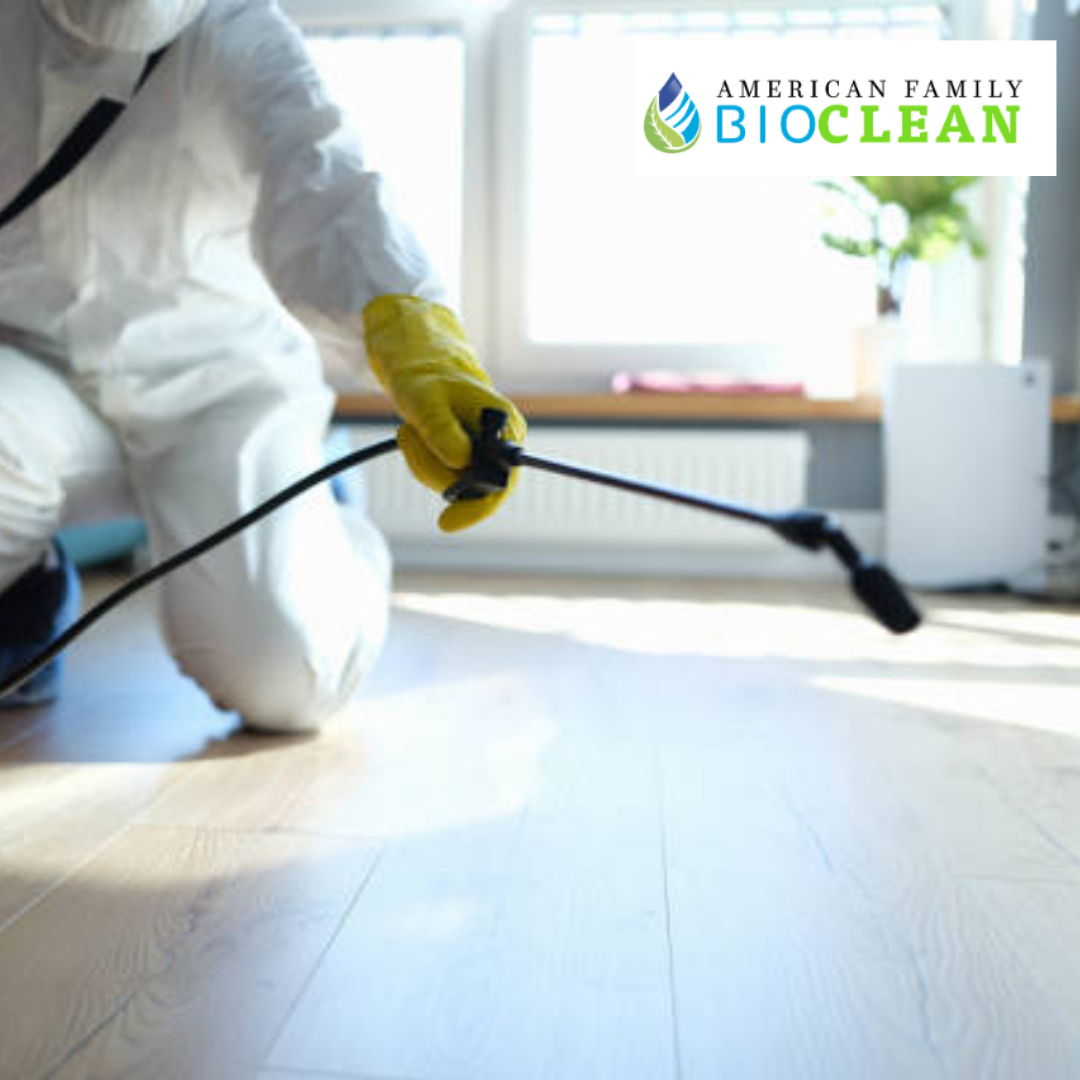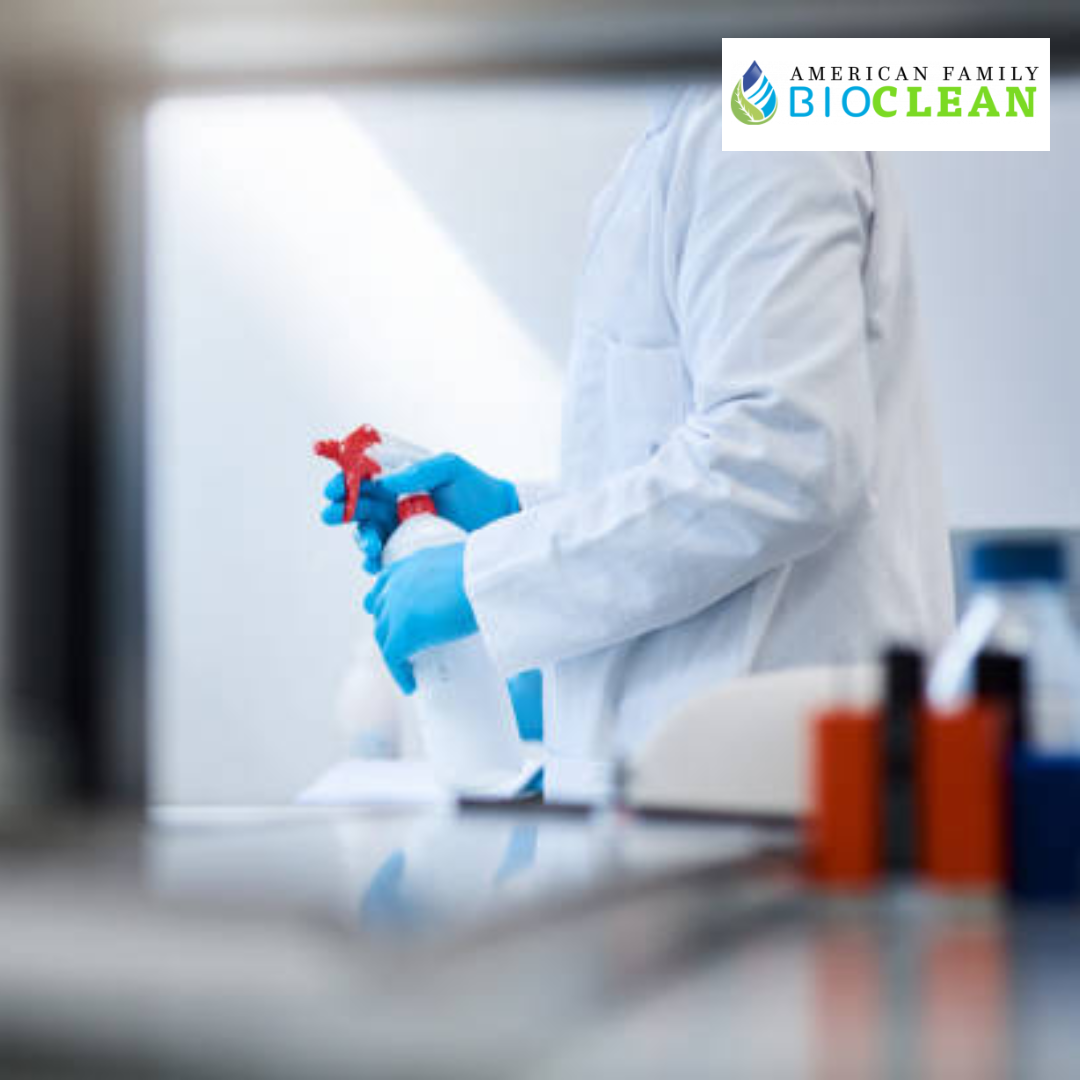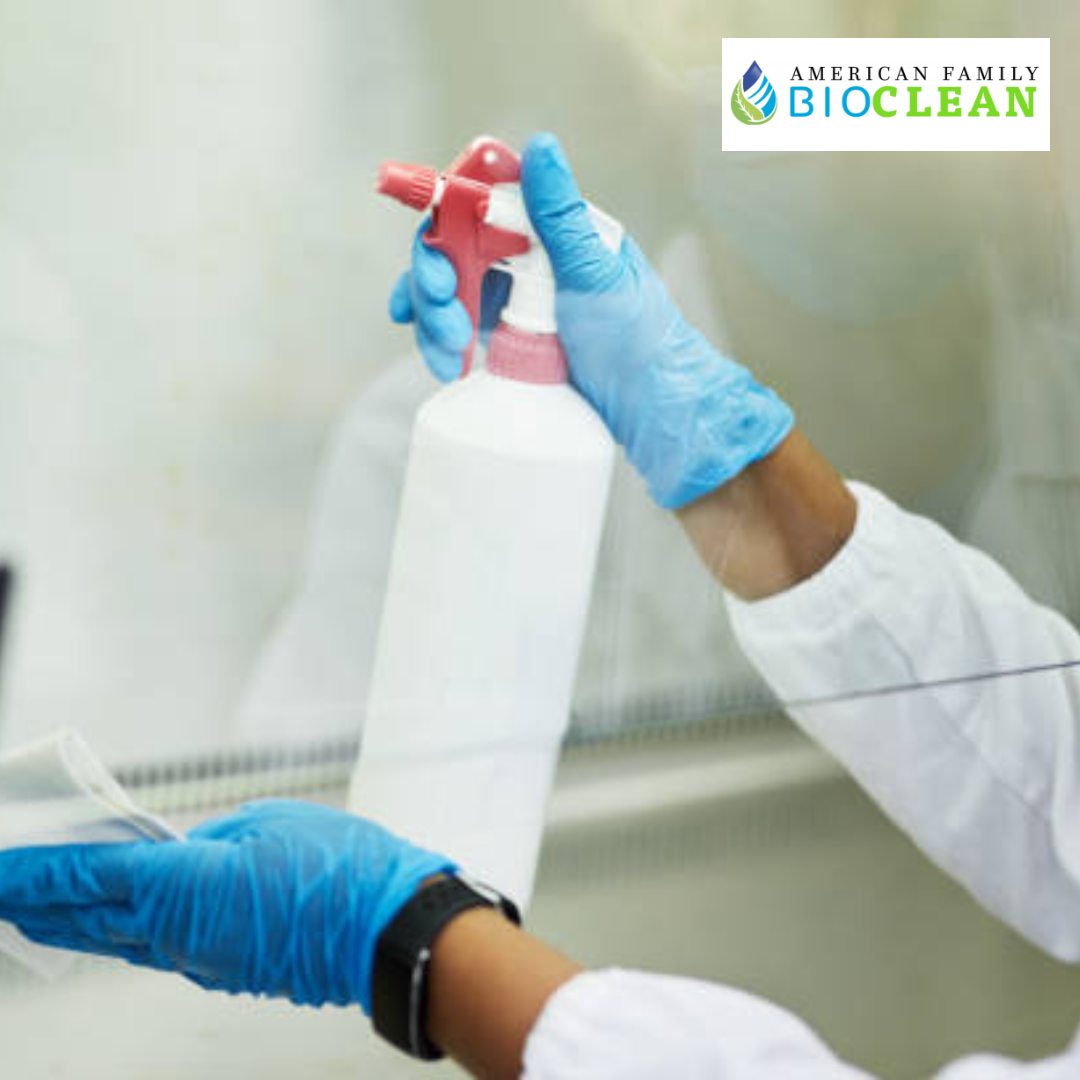Dealing with the aftermath of a drug lab is a serious matter that requires careful attention and expert handling. These spaces often contain hazardous chemicals and residues that can pose long-term health risks if not properly addressed. It’s not just about cleaning up what’s visible—true decontamination goes deeper to ensure the area is safe for future use. In this guide, American Family Bioclean shares the vital steps in drug lab decontamination to help restore safety, health, and peace of mind.
Drug Lab Decontamination Overview
Drug lab decontamination is not just about removing unwanted substances; it involves a committed, multi-step journey aimed at restoring safety and dignity to properties once tainted by illegal drug production, especially methamphetamine. Imagine walking into a home with hidden dangers, where every corner may hold remnants of potent chemicals. This approach requires meticulous effort and scientifically sound methods.
According to the U.S. Drug Enforcement Administration, over 11,000 meth labs have been reported in various states over the last three years, necessitating extensive remediation efforts. Surprisingly, only about 50% were cleaned professionally, raising critical concerns about unprotected occupants' health risks.
The Steps in Decontamination
Decontamination can be visualized as layered protection — each step builds on the previous one to ensure comprehensive safety. Starting with an initial assessment, specialists conduct thorough testing for drug residues. This crucial first stage identifies contamination levels and informs what follow-up actions are necessary. The results from this testing can either be alarming or reassuring, but they dictate everything that follows in the process.
Here’s a quick breakdown of the subsequent steps involved:
- Remove Contents: All furnishings and belongings that show signs of contamination must be disposed of properly. This isn't merely precautionary; it eliminates immediate health hazards.
- Surface Cleaning: Certified professionals utilize specialized cleaning agents designed to efficiently break down chemical residues on surfaces. This targeted approach drastically reduces surface contamination.
- Air Filtration: As airborne contaminants are particularly troublesome, installing HEPA filters in ventilation systems is essential. These filters trap microscopic particles and help eliminate any lingering airborne residues.
- Final Testing: After all cleaning measures are enacted, re-testing takes place. This final assessment determines if the property is safe for occupancy, providing peace of mind to future inhabitants.
Each action within the decontamination process is carefully crafted to systematically tackle potential health threats stemming from chemical exposure found in unlawful drug labs. Recognizing the early indicators of contamination is essential in safeguarding health and safety, guiding remediation efforts, or assessing the available professional services.
Identifying Contamination Signs
Identifying signs of contamination is crucial if you suspect a property was used as a drug lab, especially for meth production. These signs can help homeowners or buyers make informed decisions about the property.
The clues are typically divided into three categories: sensory signs, physical marks, and environmental indicators.
Sensory Indicators
One of the first things you might notice is a strong chemical odor, often similar to ammonia, cat urine, or metallic smells. These odors can linger long after the activity stops, making them a warning sign. If you walk into a space and are hit with strong, strange smells that don’t belong, taking action is a good idea. Trust your nose; these odors could indicate chemical residues from drug use or production.
Remember, odors alone aren’t always proof of contamination. However, they make a strong case for further investigation when paired with other signs, like stains or visible damage. For example, if a buyer smells chemicals and sees physical damage in a home, digging deeper is essential.
Physical Marks
When inspecting a property, look for unusual stains on countertops or discolored walls. Yellow or brown patches could be signs of hazardous substances linked to drug manufacturing. These marks aren’t just cosmetic damage; they may indicate potential contamination that poses serious health risks.
Also, check for burn marks on appliances or surfaces, which could suggest that dangerous cooking methods were used. For instance, dishwashers or microwaves may show residue from unconventional uses that aren’t immediately obvious.
Meth-related contamination has become more common, often caused by previous tenants involved in illicit activities. These issues may not be visible during standard property inspections.
If you notice signs of contamination, it’s important to address them quickly. Identifying these risks is the first step in ensuring the property's safety and restoring a healthy environment.
Comprehensive Cleaning Process
Cleaning up a drug lab is much more than mopping floors or wiping surfaces. It’s a detailed process that requires specific steps to safely and thoroughly remove hazardous residues. Every step matters—missing even a small detail can affect the success of the cleanup. The first step is to remove all items from the area, creating a clear space for proper decontamination.
Step-by-Step Cleaning
Step I: Removing Contents
Begin by properly disposing of any items that could be contaminated. This includes couches, mattresses, clothing, and any packaging or containers used in drug production. Getting rid of these items ensures you’re not just cleaning the surface but also removing any lingering contamination.
These items often absorb toxins and residues, making them unsafe to keep or reuse. Clearing them out creates a clean, open space, making it easier to focus on the areas that need thorough cleaning.
Step II: Vacuuming
After removing loose materials, the next step is vacuuming—using the right type of vacuum is key. High Efficiency Particulate Air (HEPA) vacuums are designed to trap fine particles as small as 0.3 microns, capturing dust and chemical residues that regular vacuums can’t. Vacuuming all exposed surfaces with a HEPA vacuum helps reduce airborne contaminants and prepares the area for deeper cleaning.
Once loose contaminants are removed, all surfaces should be thoroughly washed and rinsed.
Step III: Washing and Rinsing
Once the area is clear of visible debris, it’s time to focus on thorough cleaning. Use a peroxide-based cleaner to cover all walls and floors. These cleaners are highly effective at breaking down harmful chemicals left behind from illicit activities. After applying, rinse everything thoroughly with clean water to ensure no chemical residue remains.
This step requires persistence. Depending on the level of contamination, you may need to clean multiple times. One round might remove most contaminants, but repeated cleaning is often necessary to meet proper decontamination standards.
Importance of Protective Equipment
Dealing with drug lab decontamination requires caution and proper safety measures. Cleaning up residues from drugs like methamphetamine is risky, and personal safety is a top priority. That’s why using the right protective gear is essential.
Professionals rely on respirators with organic vapor cartridges to filter harmful airborne particles. These masks protect the lungs from potent chemicals and toxic residues, reducing exposure by up to 50% or more, so workers can safely restore contaminated spaces.
Full-body suits are another key piece of gear. They offer critical protection against skin exposure to hazardous substances. When used correctly, these suits can reduce contact by as much as 95%.
Eye protection is just as important. Safety goggles shield against unexpected chemical splashes, protecting your vision. They can lower the risk of eye injuries by 80%, ensuring workers stay safe during hazardous tasks.
It’s also crucial to regularly inspect all gear for tears or punctures that could compromise its effectiveness. Keeping backup equipment on hand ensures immediate replacements are available, avoiding delays and maintaining safety.
With the right precautions and gear, decontamination work can be done effectively and safely.
Ensuring Compliance and Safety
Training workers on how to use protective equipment properly, using protective equipment, and using pieces of gear that work together to reduce risks.
Using protective equipment correctly keeps workers safe and helps create a healthier environment during decontamination efforts. With these practices in place, you can now focus on hiring skilled professionals for cleanup tasks.
Hiring Certified Cleanup Professionals
If you’re dealing with drug lab decontamination, it's important to rely on certified cleanup professionals. These experts have the training, tools, and expertise to safely and effectively handle hazardous materials. Attempting a DIY cleanup can be risky, potentially leaving contaminants behind or worsening the situation. Bringing in professionals ensures the job is done right, so you can confidently focus on restoring your property.
What to Look for in Professionals
Start your search for certified cleanup professionals by checking their credentials carefully. Look for certifications like IICRC or similar organizations that prove their expertise in biohazard decontamination. Ensure they have proper insurance coverage to protect you from liabilities and show they take their work seriously.
Reading customer reviews is a great way to assess a company's reliability and professionalism. Ask about their experience with drug lab decontamination to ensure they can handle similar situations effectively.
Before hiring, confirm that their methods follow Environmental Protection Agency (EPA) guidelines and comply with state regulations. Safety should always come first, and understanding local rules helps avoid future legal issues caused by improper cleaning.
Finally, after the cleanup, take steps to keep your property secure. Long-term success depends not only on the cleanup itself but also on proactive measures to maintain safety in the future.
Ensuring Long-Term Safety Measures
Cleaning up a property after drug production is only the first step. To ensure lasting safety, it’s crucial to implement ongoing practices to prevent health risks from returning. Without these measures, contamination could return, putting former and future residents in danger. Regular maintenance is key to keeping a property safe and livable.
Regular Inspections
Regular inspections are key to identifying contamination. This involves checking for physical signs like unusual stains or odors and ensuring no chemical residue is present. Ideally, inspections should be done every six months or annually by professionals trained to spot signs of drug lab contamination. These experts can identify subtle issues that might go unnoticed.
Continuous Air Quality Monitoring
Installing air monitoring systems helps track harmful chemicals that can't be seen. Sensors that detect volatile organic compounds (VOCs) provide real-time air quality data. This proactive approach identifies issues early and reassures people that their health is a priority.
Research shows that good air quality improves respiratory health and can reduce exposure to toxins, leading to long-term savings on healthcare costs.
While these technical measures are important, you must also prioritize education as a key part of safety management.
Educating Future Occupants
Sharing a property's history with future occupants can help them understand and appreciate its condition better. Providing clear briefing documents about past issues, the steps taken to fix them, and ongoing safety protocols gives them the knowledge they need to stay aware of their living situation. When people know what to expect, they’re more likely to remain mindful of safety.
Focusing on these key steps safeguards individual health and supports the safety and well-being of the community.
Overall, property safety is a crucial aspect in maintaining a healthy and happy community. Following the abovementioned steps, property owners can ensure their properties are safe for their current and future occupants. Clear communication, regular inspections, and timely repairs prevent accidents and promote overall well-being. It is the responsibility of every property owner to prioritize safety and take proactive measures to maintain it. Contact American Family Bioclean for professional cleaning and disinfection services to keep your property safe and healthy. Remember, a safe property is a happy property. Work together to create safer communities for everyone.















